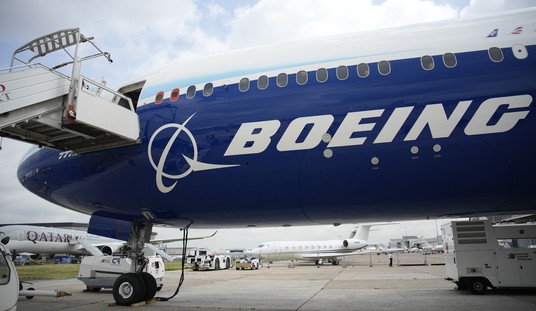If there was ever “a most interesting man in the world,” as the Dos Equis beer commercial muses, Rene A. Dussaq is he. Suave, daring, a Latin adventurer with a smile that broadened as danger mounted, he lived a life only imagined in movies or novels. Argentine born, Swiss educated, he was an Olympic rower, tennis champion, Cuban revolutionary, Hollywood stuntman, deep-sea diver and treasure hunter, mesmerizing speaker – and to top it off, a World War II legend.
He was also - in stark contrast - a shooter and organizer of President John F. Kennedy’s 1963 assassination, per secret diaries left by an assassin who was at the heart of Cold War clandestine. But Douglas Bazata, who penned the diaries, was a close friend of the now deceased Dussaq. They were OSS Jedburgh’s together, America’s first large-scale special forces. Bazata gave me his private diaries shortly before he died. They tell a tale of friendship and plotting that begins in the 1930s and ends years after that fateful day in Dallas with Bazata thwarted in trying to tell what he knew.
Few in America have ever heard of the secretive Dussaq, although some of his exploits have been chronicled. He kept a low profile as a post-WWII Prudential Insurance manager in Los Angeles. But in France, he is the legendary “Captain Bazooka,” a naturalized American who helped the Maquis fight the Nazis and almost single-handedly captured 500 Germans. As a world adventurer and stuntman, he dove on ocean wrecks, wing-walked flying airplanes, and knife-fought sharks. He once hand-walked atop the Empire State Building. As his recommender to the OSS, wrote, He was the “only man I ever knew entirely without fear.”
Bazata, Dussaq’s secret chronicler, was much the same. That is why the two hit it off. Dussaq’s father was a Cuban diplomat and Sufi mystic. “Be a lion,” he told his son. Young Dussaq spent summers in Cuba becoming involved in revolution and spy trade. He and Bazata met when Bazata, a young marine, was sent to assassinate a Cuban revolutionary. Dussaq saved his life and Bazata was forever indebted. When, after WWII, Dussaq, who resented American exploitation of Cuba, asked Bazata to help him liberate the island, Bazata, who ran a mercenary group of saboteurs and assassins in Europe, obliged.
In the next few years, as Dussaq worked toward his aim, Bazata’s group stole and extorted money for Dussaq’s cause. Finally, Dussaq said they’d found their liberator: Fidel Castro, a young revolutionary. The diaries are vague on Dussaq’s relationship to Castro which is mysterious and secretive. But eventually, when Castro came to Mexico after imprisonment on the Isle of Pines, Dussaq, per the diaries, would accompany him on the ill-fated “Granma” expedition which began Castro’s final push to his 1959 takeover.
Recommended
The diaries, coded but which I deciphered, paint a vivid picture of these early years when the plot to kill Kennedy was hatched.
It began in the 1940s. Dussaq feared Joe Kennedy, JFK’s father. He believed his father had a plan to rule the world, starting with a son becoming president. Cuba would undoubtedly suffer, as was so vividly portrayed in the movie, Godfather, with gangsters divvying up a cake shaped like the island. Dussaq believed it would take a shock like an assassination to make America see the evil of their leaders. When JFK tried numerous times to kill Castro with CIA plots, Dussaq, a double agent, learned of them and felt they provided justification for “Hydra-K,” the plot named in the diaries.
Bazata writes that he wanted no part of the actual killing, but he staged practices in remote areas of Europe. Dallas was pinpointed as a good place to kill Kennedy. It was a hotbed of anti-JFK sentiment and corrupt leaders and police, Bazata writes. Being close to Mexico enabled easy ingress and exit.
Dussaq took part in the assassination. Bazata helped supply 5 shooters, variously described. Oswald was a patsy. Dussaq didn’t want to use him, but higher ups did. Dussaq had a religious ferver to be the first shot so he tricked him. Oswald’s first shot was a blank, which he was not supposed to know; however, he figured it out, firing real shots after the first. His blank was the signal for real bullets to fly from in front of Kennedy. The exact position – grassy knoll, overpass, manhole – is not stated. Apparently Bazata, meeting with Dussaq after the assassination, was not told.
Is it true? Several things argue that Bazata’s secret account must be taken seriously. First, he was at the heart of Cold War clandestine, running a group that was regularly hired by the CIA, the French, and other governments. One of Bazata’s best friends was William Colby, later the CIA director who blew the whistle on CIA dirty tricks.
Another good friend of Bazata’s was Lucien Conein, as close to James Bond as an American spy can get. It was Conein, now dead but then a CIA operative, who oversaw getting rid of Ngo Dinh Diem, the South Vietnam leader assassinated a month before JFK. As part of his help to Dussaq, Bazata was to try and stave off JFK’s assassination by telling authorities he would be killed if JFK didn’t back off Cuba. But Bazata was rebuffed by CIA he approached. Scared, he began meeting with Conein and documenting what he knew without revealing Dussaq.
This is a bare outline of what is detailed in my book, Target: JFK The Spy Who Killed Kennedy? It’s been 50 years since the assassination, but it has never been conclusively solved. Most Americans don’t believe the Warren Commission which says there was only a lone shooter, Oswald, and no conspiracy. I’m one of those. I’d be derelict in my duty as a journalist and an American who wants truth not tell this story. It could be key to the assassination mystery, but the reader must be the judge.


